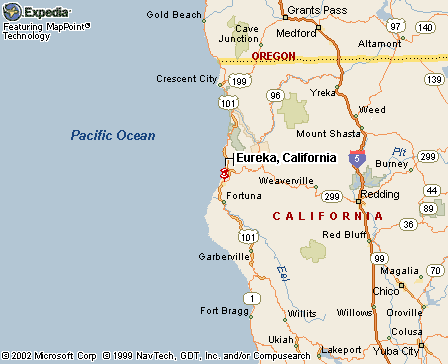|
|
Canku Ota |
|
|
(Many Paths) |
||
|
An Online Newsletter Celebrating Native America |
||
|
March 23, 2002 - Issue 57 |
||
|
|
||
|
Efforts Under Way to Preserve Karuk Language |
||
|
by James Faulk
The Times-Standard
|
||
 EUREKA,
CA - With roughly eight fluent speakers of its language remaining, the
Karuk Tribe is gathering its resources to keep its tongue from slipping
into history. EUREKA,
CA - With roughly eight fluent speakers of its language remaining, the
Karuk Tribe is gathering its resources to keep its tongue from slipping
into history.
Protected from settler influence more so than most of California's tribes during the 1800s, the tribe has managed to preserve its language in ceremonies and songs, but few fluent speakers remain, a problem that may cause the language to dwindle and die. "Every person we lose is liking losing an encyclopedia," said Chairman Andres Cramblit of the Karuk Language Restoration Committee. The tribe had some brief contact with white settlers in the late 1840s as a result of the California gold rush, but when the forty-niners realized there was not much gold to be had this far north, that contact ended. The cultures rubbed again in the early 1900s and the subsequent effects, such as placing American Indian children in boarding schools and the flight of Indians off reservations to pursue jobs and better economic opportunity, eventually took its toll on the language. "Language was a casualty of that," Cramblit said. Fortunately, in 1988 the Karuk Tribe organized its language committee, which works tirelessly to secure the funding necessary to develop language projects that teach tribal members how to speak the language of their ancestors. The most recent efforts include an application for a grant from the Administration for Native Americans for $150,000 that would help the tribe republish, update and distribute a Karuk dictionary amassed in the 1940s. It would also help to translate the Harrington Texts, a study of the language put together by ethnographers in the 1800s. The dictionary, assembled by William Bright in the 1940s, contains a collection of thousands of Karuk words. A more practical component of the grant would be to assemble lesson packets and other resource materials for community classes and families who would like to learn the language and pass it on to their children. Cramblit said preserving the language is a way to preserve the culture. "For me, the language and the culture are inextricably linked -- if you understand the language, you're a part of the culture," he said. One of the main goals of the committee is to develop a 20-year master plan to identify future language projects and to secure funding. Cramblit emphasized that the Karuk language is not dead, but rather a vibrant, living language. "It's a growing language," he said. "We now have words for car, motorcycle, umbrella, all sorts of things." With an estimated 3,800 members, the tribe's ancestral land stretches from Seiad Valley to the northeast to Bluff Creek between Orleans and Weitchpec, along the Salmon River. Historically, the tribe was a collection of people with similar culture and language but without the formal tribal organization known to other local tribes.
|
||||||||
|
|
||
|
|
||
| Canku Ota is a free Newsletter celebrating Native America, its traditions and accomplishments . We do not provide subscriber or visitor names to anyone. Some articles presented in Canku Ota may contain copyright material. We have received appropriate permissions for republishing any articles. Material appearing here is distributed without profit or monetary gain to those who have expressed an interest. This is in accordance with Title 17 U.S.C. section 107. | ||
|
Canku Ota is a copyright © 2000, 2001, 2002 of Vicki Lockard and Paul Barry. |
||
|
|
|
|
|
The "Canku Ota - A Newsletter Celebrating Native America" web site and its design is the |
||
|
Copyright © 1999, 2000, 2001, 2002 of Paul C. Barry. |
||
|
All Rights Reserved. |
||

